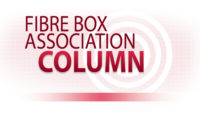Packaging Materials Affect Perceived Value of E-Commerce Shipments

A new study conducted by Pregis (pregis.com) and the University of Wisconsin (UW) in Madison shows that the value perception of e-commerce shipments is significantly impacted by the materials chosen to protect them. Even a small increase in packaging material expenditures—as little as 19 cents—can make a dramatic impact (as much as 45 percent) on the perceived value.
“There is strong evidence that the unboxing experience impacts customers’ emotions and their perceptions of product value. When a retailer gets the unboxing experience right, they demonstrate that the product is valuable and worth protecting. Consumers recognize that signal, and it influences their perception of quality. As e-commerce continues to be the growth engine for retail, retailers and brands must understand their new showplace is the parcel packaging," said Page Moreau, UW professor of marketing.
The study included 60 participants, split into two groups of 30. Each group was asked to unbox the same product—a bamboo bowl, with an actual retail price of $25. The participants were unaware of the actual cost of the bowl, so that perception could be captured.
The two groups were presented with a box prepared with very different packaging. One package is best described as ”economy”—plain brown box with white polystyrene foam for inside protection and clear carton sealing tape. The other package would be considered “premium.” The product was housed in a white box, clear inflated hybrid cushioning featuring a square pattern to protect the contents and soft white foam wrapped around the bowl with a “thank you” sticker. White carton sealing tape was used on the exterior. Participants only saw one version of the packaging so they were not aware that there was a different option.
After the unboxing experience, participants were asked to complete a survey which focused on the following areas—expected price, likelihood to gift, unboxing emotions, packaging perception, and the most likely retail outlet that the package came from. Across all attributes, the premium packaging components scored higher—including expected retail value of the product which was a significant 45% higher than the economy packaging for the identical product.
The study clearly demonstrates that while the primary product package continues to be extremely important, the parcel packaging selected to translate the brand promise should be given equal consideration now that the buying experience is moving into the consumer’s home.
Looking for a reprint of this article?
From high-res PDFs to custom plaques, order your copy today!





